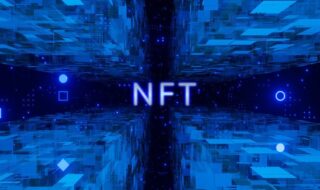One of the critical features of BTC is that it comes with a limit in the market. The inventor of this coin Satoshi Nakamoto has set the limit to 21 M. It means you have a limit of up to 21 Million coins for mining. The mystery man Satoshi Nakamoto has come up with the idea of investing in Bitcoin by setting limits on it. He gave them the idea of distributing the best benefits to digital currency users. You can find several factors governing this idea, and one such role that makes things work is setting up the limit of 21 M. The significant number of BTC that are limited with 21 M speaks a lot about the dead-end you have as a miner. On the other hand, like the metaverse it Loses money in a short duration of time but they caught up with it. This limit is set over the BTC network because it only employs bit shift operators that remain the arithmetic operator. So people are ready to accept the decimal points down to the closest point with an integer of two.
Bitcoin mining and the limit
Satoshi has set the limit up to 21 million; thus, you have a limited number of coins to play and mine. It takes around ten minutes to mine one Bitcoin, which happens to be the average duration you need to take care of a new block of BTC. After every block of 210K blocks, the average number of coins reduces by 50 percent in the market. Once the upper limit of BTC mining is reached, you can find no other coin getting mined. The reasons are simple: the Bitcoin network only uses bit shift operators, including the arithmetic operators and other seminal points that go down to the closets for a small-time integer of two. The rounding of any currency went to a good block reward that further helped in producing a new Bitcoin block, and it went on to get divided by half, and then the prize came with a precise calculation. All these rewards are expressed in Satoshis, and they can equal around 0.000000001 of BTCs.

The reward you get is rounded systematically, with many more BTC block rewards coming to play like a fraction of satoshis. The coins will remain available for mining till 21 Million in the market. In Jan 2022, around 18.9 M of Bitcoins was mined. It goes to about 90 percent of the currency in the market. For every four years, a new BTC is issued. And these now reduce the half of the approximately every four years in the market. By 2140 the rest of the coin will be in the process of mining. When Bitcoin came into the market, the number of new BTCs minted in every block came to around 50 and decreased every four years. In the last halving period of 2020, we see the number of blocks reaching 6.25. Thus with every Bitcoin halving time, you can find the blocks reducing, allowing people to access less number of coins for mining.
Bitcoin Halving
Every four years, you get the chance to see a halving event. This is because the maximum number of mining limits is 21 M, and it is likely to enjoy a good amount of BTCs that remain in circulation and are sustainable below that amount. Bitcoin holders are now able to lose access to sharing their wallet details. You can find Bitcoin getting the option to lose access to BTC when you lose the private keys for the wallet. As per the study carried out by the crypto firm Chainalysis out of every 10, two people have already lost their coins by losing their private keys. Thus, losing private keys is a usual affair we often experience in the crypto circle. It can lead to millions of losses, and halving is done to keep a check on these things.
Wrapping up
Once we see Bitcoin mining reaching the 21 M mark, it is going to stop the mining procedure all across the world. However, this will take another 118 years to accomplish as the halving period controls the number of mining coins. After the upper limit, no new Bitcoin is given in the market. It will affect the crypto world, but we have ample time to see this happening. It all depends upon the way Bitcoin will evolve in the coming times.


